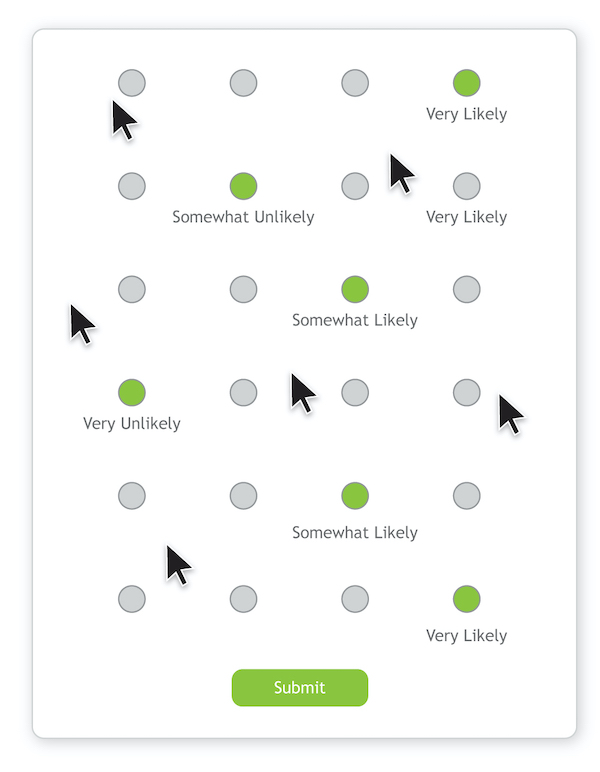Students fill out course evaluations at Portland State every term, but their input is one small part of how the university evaluates its professors. The term course evaluation may bring to students’ minds a multiple choice scantron—but in reality, the evaluation of courses is multifaceted.
There is no one system used across PSU. Instead, the Institutional Assessment Council (IAC) sets guidelines which are further developed by individual departments. The guidelines include student input, as well as peer reviews among instructors, instructors’ self assessments and administrator or committee ratings. Summative assessments are performed at the end of the term, and formative assessments are performed throughout.
One table found on PSU’s Institutional Assessment Council website lists 19 different types of evidence. This can be confusing, and points to the flaws of the current system. The course evaluating process can never be completely objective, and many people have a stake in the outcome. So who gets the final say in whether a course is good, bad or ugly?
The process starts when PSU wants to create a new course. According to Dr. Janelle Voegele, the director of teaching, learning and assessment at PSU, most departments would start by looking at how the department defines good teaching. From there, PSU would create a pilot draft of the survey, which students would see at the end of the term. It gets refined, and then the survey goes to students.
However, how much weight is being put into these students’ comments?
A document found on the IAC website lists faculty concerns with student input. Among the top concerns is comments similar to “I hated you for forcing us to learn this material, but no I’m glad you did—thank you and keep doing what you’re doing,” which accounts for the feeling students may initially not have enjoyed a learning process, but later found its form and/or content helpful.
A few other concerns include that currently, student assessments are mostly summative—gathered only at the end of the term—and small class sizes have small sample sizes. The list goes on, but perhaps most pressing is the concern that current measures reflect student satisfaction, not student learning.
However, student satisfaction can be impacted by a high degree of bias. There are many different biases at work, including the potential of gender bias. Voegele explained this means while a male professor might be decisive and perceived positively, a female professor exhibiting the same behavior could be seen negatively.
According to the IAC document, “more difficult classes tend to get lower scores.” At the same time, 100-level courses consistently get scored lower as well.
The IAC lists many alternatives to student input on a separate document; these include observations of teaching, peer review, curriculum maps and mentorship of students and faculty. All of these are “direct methods…collecting information require[s] a display of knowledge and skills.” The opposite is indirect methods, which involve “reflection on learning, behavior and attitudes.”
Once course evaluations are collected and read, they are used for a number of things, including hiring, promotion decisions and course scheduling. However, Voegele expressed the number one area in which course evaluations are used is to better the student experience.
“Faculty really care what students say about their experiences and their courses,” Voegele said.
Professor Paul Collins, chair of PSU’s english department, spoke on some of his previous experience with course evaluations—When he was at University of California, Davis, student government ran them.
“They would collect those evaluations into a…volume of comments about each professor. They would publish it and you could buy it in the school bookstore for a couple bucks,” Collins stated.
Will that happen anytime soon at PSU? Probably not. There are currently no plans from Associated Students of PSU or IAO to initiate such a process.
The switch to online in light of COVID-19 both will and will not affect the course evaluations process.
“We may not [know] until after spring quarter. But over the last decade, the majority of course evaluations were moving to digital anyway,” Voegele said. This means the method of course evaluations will not change much nine weeks from now. However, the way the content of the upcoming surveys is viewed might.
“Talk about your experiences…they’ll help us,” Voegele said.
Edit: A previous version of this article stated that Collins suggested that PSU switch to student led evaluations, which he does not support. The article has been edited to reflect this.





